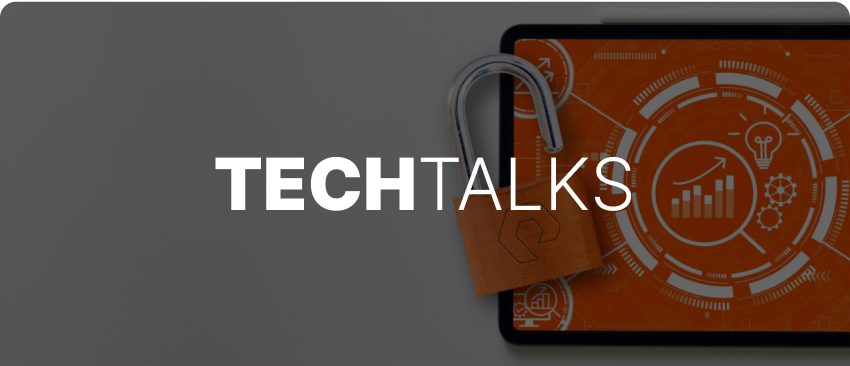ソフトウェア・ソリューションを選ぶ際には、初期費用が安いシステムを選びたくなることがあります。しかし、アップデート、バグ修正、ダウンタイムなどのソフトウェアの実行と保守にかかるコストは、初期コストを年間 20% 以上増加させる可能性があります。そのため、ソフトウェアを将来にわたって保護するために最初から投資することが重要です。
モダン・アプリケーション開発は、アプリケーションの俊敏性、信頼性、セキュリティを向上させると同時に、より優れたアプリケーションの構築とリリースを高速化するための実証済みのアプローチです。レガシー・アプリケーションとは対照的に、モダン・アプリケーションは保守が容易で、低コストです。投資、開発者の時間、IT スタッフのリソースを削減できます。
モダン・アプリケーションは、アジャイルな開発プロセス、モジュラー・アーキテクチャ、サーバーレスの運用モデルを使用して構築されています。これにより、組織はリスクと総所有コスト(TCO)を削減しながら、イノベーションを迅速に行い、市場投入までの時間を短縮することができます。実際、TCO は、ソフトウェア・ソリューションを選択する際に最も重要な要素の 1 つであり、多くの場合見落とされています。
モダン・アプリケーションの総所有コストについて知っておくべきことをご紹介します。
総所有コスト
ガートナーは、TCO を次のように定義しています。「時間の経過に伴う企業全体にわたる情報技術(IT)やその他のコストの包括的な評価のこと。IT 部門にとっての TCO には、ハードウェアとソフトウェアの取得、管理とサポート、通信、エンドユーザーのコスト、ダウンタイム、トレーニング、その他の生産性損失の機会コストが含まれます。」
TCO は、製品やサービスの基本的な購入価格以上に本当にかかるコストを判断する上で非常に重要です。直接的コストと間接的コストの両方を含む、製品やサービスのライフ・サイクル全体を通じて関連する全てのコストを組み合わせたものです。
モダン・アプリケーションが総所有コストを削減する方法
モダン・アプリケーションは、開発コストの削減、デリバリー・サイクルの短縮、運用コストの削減など、いくつかの方法で総所有コストを削減します。
可用性の向上
レガシー・システムは一般的に大規模で、データベース、ユーザ・インターフェース、アプリケーションに関連するその他のサービスと高度に統合されています。このモノリシック性は、アプリケーションの一部が失敗した場合、アプリケーション全体が失敗することを意味します。システムに適用する必要がある更新や変更は、ダウンタイムにつながります。
レガシー・アプリケーションのサイズや統合の複雑さにより、問題が解決するまでに数時間、数日かかる場合があります。従来のソフトウェアに依存する他のアプリケーションも、シャットダウンや再起動する必要があります。計画的または計画外のダウンタイムは、特にタイムクリティカルなサービスを提供する場合、収益の損失につながる可能性があります。
一方、モダン・アプリケーションでは、マイクロサービス・アプローチが採用されているため、ダウンタイムに対する耐性があります。マイクロサービスは、小型で相互運用可能なモジュールで、更新や新機能を実装する際に個別にアップグレードできます。マイクロサービスは独立しているため、あるサービスの問題が他のサービスに影響を与えるとは限りません。これにより、ダウンタイムが全体的に低減し、拡張により収益損失も低減します。
より高速な配信サイクル
レガシー・アプリケーションは、ウォーターフォール・モデルなどの従来のソフトウェア開発アプローチを使用して構築されています。これらの方法では、要件の収集、設計、開発、テスト、展開/配信など、特定の活動を伴う逐次的なソフトウェア開発アプローチを用います。開発チームが先に進む前に、各ステップを完了する必要があります。
その結果、これらの方法では、6~24 か月の開発期間や、顧客が実際に必要としない(または望んでいない)機能に無駄な時間を費やすことがよくあります。変更や機能の追加には、最初からプロセス全体を再起動する必要があります。
対照的に、モダン・アプリケーションは、アジャイル手法、DevOps プラクティス、モジュラー・アーキテクチャ、継続的インテグレーション/継続的デリバリー(CI/CD)プロセスによってサポートされる高速開発プロセスを使用して構築されています。アジャイル手法と DevOps プラクティスは、開発者、IT 運用チーム、その他のステークホルダー間のコラボレーションとコミュニケーションを向上させます。これにより、開発目標がより明確になります。
自動化された構築、テスト、展開のための CI/CD プロセスは、レガシー・アプリケーションを遅らせる手作業を排除します。マイクロサービスは、小規模なコードブロックのモジュール開発をサポートし、開発者がソフトウェア機能をより迅速に提供できるようにします。これらのアプリケーション開発プロセスやその他のモダン・アプリケーション開発プロセスは、時間の経過とともに人件費を削減し、不要な開発に伴うコストを防ぎます。
セキュリティの強化
モダン・アプリケーション開発には、レガシー・アプリケーションよりもモダン・アプリケーションの安全性を高めるセキュリティ制御が組み込まれています。
例えば、DevSecOps(開発、セキュリティ、運用の略)は、自動化されたプロセスを通じて、ソフトウェア開発のあらゆる段階にセキュリティを統合します。これにより、開発者は開発の初期段階からセキュリティとコンプライアンスの目標を達成することに集中し、最終製品のエラーや脆弱性を削減できます。
DevSecOps は、CI/CD パイプラインの各ポイントでセキュリティ評価と脆弱性テストを統合します。その結果、継続的なセキュリティ監視により、セキュリティおよび運用チームは、自動化されたプロセスを通じて、セキュリティの脅威について開発環境を監視できます。
これらのツールは、環境に対する可視性を高め、潜在的な脅威やセキュリティ・リスクを特定し、修正します。監視ツールには、アラート機能も備わっており、IT 管理者はインシデントを短時間で検出、報告、対応できます。
最近話題になったサイバー攻撃で明らかになったように、セキュアなアプリケーションは、ランサムウェアやコンプライアンス違反による金銭的損失を回避するために不可欠です。
開発コストの削減
従来のソフトウェア開発手法では柔軟性がないため、遅延、非効率性、無駄が生じることがよくあります。これにより、全体的な開発コストが増大します。
最新の開発技術で構築されたアプリケーションは、完了までの時間が短縮され、コードの使用も少なくなり、仮想化とサーバーレス・アーキテクチャにより、コスト削減が可能なクラウドベースの環境を活用できます。
クラウドネイティブなアーキテクチャにより、物理的なハードウェアやネットワーク・インフラが不要になります。クラウドのサーバーレス・アーキテクチャにより、従量課金制モデルで動的なワークロードを実行できます。これにより、開発環境に必要なインフラのプロビジョニングと保守のコストが削減されます。
クラウド・プロバイダは、従量課金制の価格モデルで、ソフトウェア、ストレージ、インフラ、開発プラットフォームのための アズ・ア・サービス・ ソリューションを提供します。これにより、スタートアップ・コストと、未使用のリソースのオーバープロビジョニングや支払いに関連するコストの両方を削減できます。
また、最新のアプリケーションは、オープンソース・ソフトウェアを活用することでコストを削減できます。オープンソース・ソフトウェアは無料で使用でき、追加のライセンス料は不要です。
データ・ストレージの TCO を削減
効率的なストレージ管理システムにより、管理、保守、アップグレードにかかる時間を削減できます。Evergreen//One は、オンプレミスのクラウドの俊敏性を提供します。
- 1 つのサブスクリプションで、ビジネス要件にあったストレージを入手できます。
- オールフラッシュ・ストレージをサービスとして利用することで、設備投資から OPEX への切り替えが可能となり、使用するストレージのみにコストがかかります。
- ランサムウェア対策のスナップショット、高可用性クラスタリング、ディザスタ・リカバリにより、自動化されたデータ保護でデータを保護します。
オンプレミスとパブリック・クラウド向けの業界で最も信頼性の高いストレージ・アズ・ア・サービス(STaaS)である Evergreen//One で、「モダン・データ・エクスペリエンス」をぜひご活用ください。





